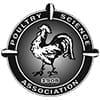Cherry Valley ducks need 38 days to reach the ideal marketable age - Interpretive Summary
Published: March 18, 2022
By: https://poultryscience.org/
by Sam Shafer
Yangzhou University scientists examine meat quality from every angle
Duck meat is prized for its delicate flavor and juicy texture, as well as its notable protein content, polyunsaturated fatty acids, vitamins and minerals. In fact, duck meat is rising in popularity, especially in China.
The challenge is to get ducks to market quickly without compromising meat quality. In China, which produces 85 percent of the world’s duck meat, there is a huge variation in marketable age. Some producers send birds before 30 days old, while others wait more than 49 days.
New research, published recently in Poultry Science®, suggests 38 days may be the ideal marketable age for the popular Cherry Valley duck breed. The Yangzhou University researchers found that ducks marketed at 38 days had the right balance of meat composition and nutritional value.
“In the present study, the breast muscle of Cherry Valley broiler ducks at 38 days of age achieved the highest protein content and the relatively lower IMF [intramuscular fat],” write Cao et al.
In previous studies, poultry scientists had found that important attributes like protein and fat content increase in Peking ducks as they age. Yet there had not been an in depth-analysis of the effects of marketable age on meat quality in Cherry Valley, the most efficient Pekin-type duck.
For the new study, the researchers raised 400 Cherry Valley ducks in an industrial duck shed. At 28, 38, 42, and 45 days old, the researchers slaughtered three male and three female ducks. The breast muscles were immediately collected and prepared for analysis.
The researchers got an overall picture of the meat quality by grinding up samples of the meat and testing the proximate composition—i.e. the protein and IMF content. The team also examined the breast muscle fibers, mineral content, amino acid profile, cholesterol and the fatty acid profile.
The scientists found that the breast meat from ducks at 38 days old had higher protein content than any of the other ages. The IMF content trended downward as the ducks aged, while muscle fibers increased sharply between ages 28 days and 45 days. When it came to mineral composition, ducks at 38 days had higher Fe and Mg content, while Zn and Ca content was highest at 28 days and trended downward over time. Ducks at 38 days also had higher essential and non-essential amino acid content. Importantly, the concentration of total flavor amino acids was higher at 38 days than at 28 days.
Meanwhile, cholesterol content dropped off significantly after 28 days and stayed stable between 38 and 42 days. The contents of omega-6 polyunsaturated fatty acids, and polyunsaturated fatty acids were the highest at 38 days, while DHA and saturated fatty acids were the lowest at 28 days.
“Together, these findings suggest that an age of 38 d might be recommended as an appropriate marketable age to provide high-nutritional duck meat,” write the study authors.
The researchers also discuss a new tool they developed: a comprehensive multi-index evaluation model of duck meat quality.
What does this study mean for producers?
- Cherry Valley ducks that appear full grown may need further time to achieve a highly nutritional meat quality.
- This analysis suggests that 38 days is an ideal marketable age. There is no advantage to waiting until 42 days.
- Ducks at 38 days had the highest levels of two valuable traits: protein levels and intramuscular fat levels.
The full paper, titled “Effect of marketable age on proximate composition and nutritional profile of breast meat from Cherry Valley broiler ducks,” can be found in Poultry Science® and online here.
DOI: 10.1016/j.psj.2021.101425
Source
https://poultryscience.org/Related topics:
Authors:

Recommend
Comment
Share

Would you like to discuss another topic? Create a new post to engage with experts in the community.



